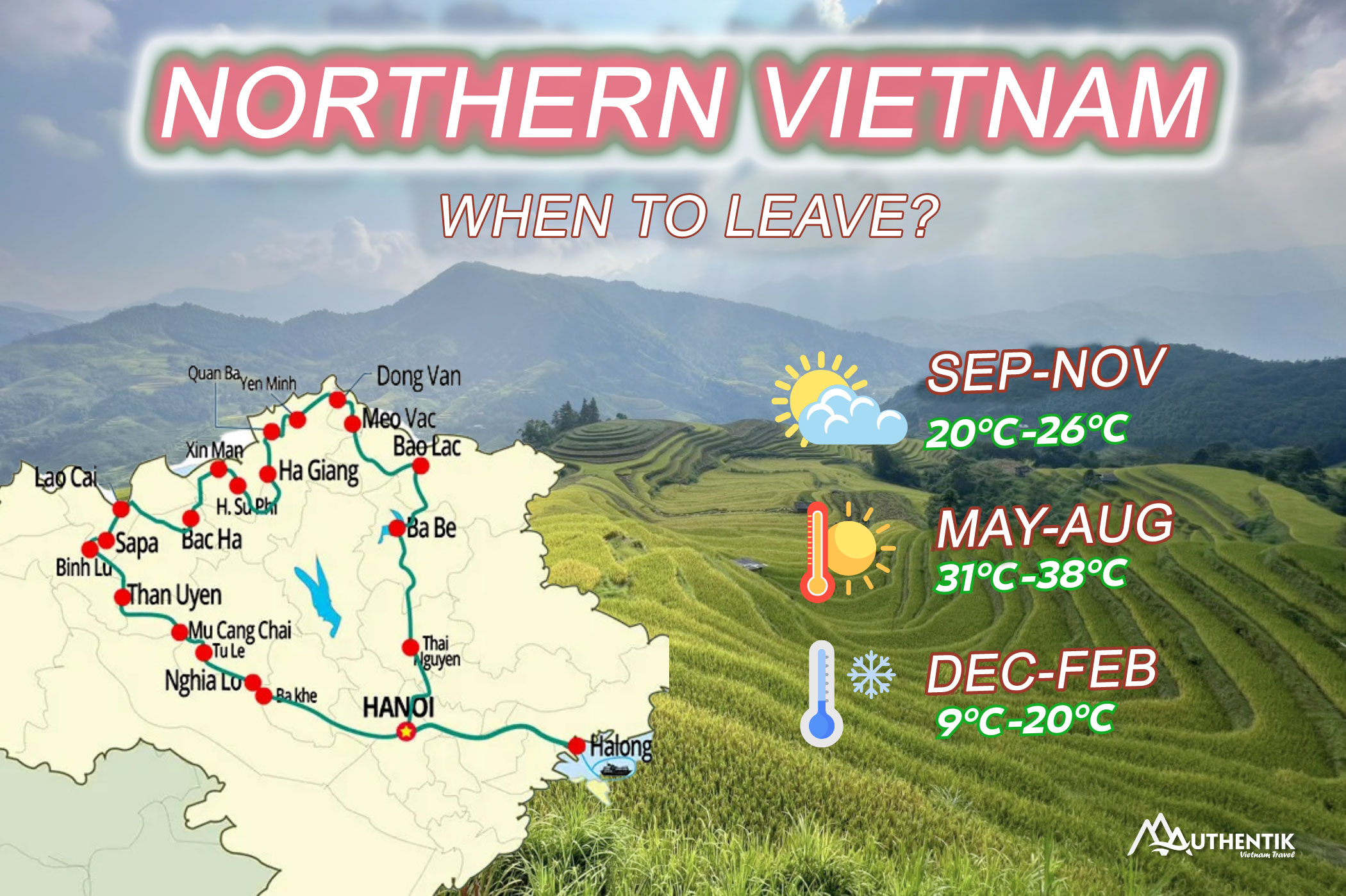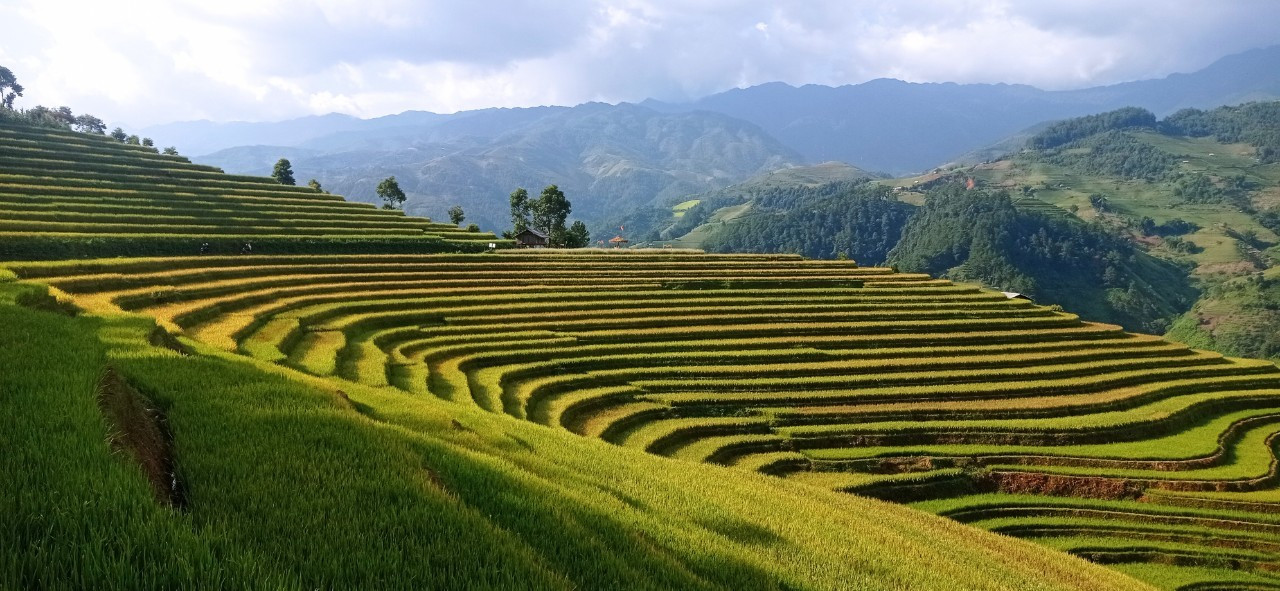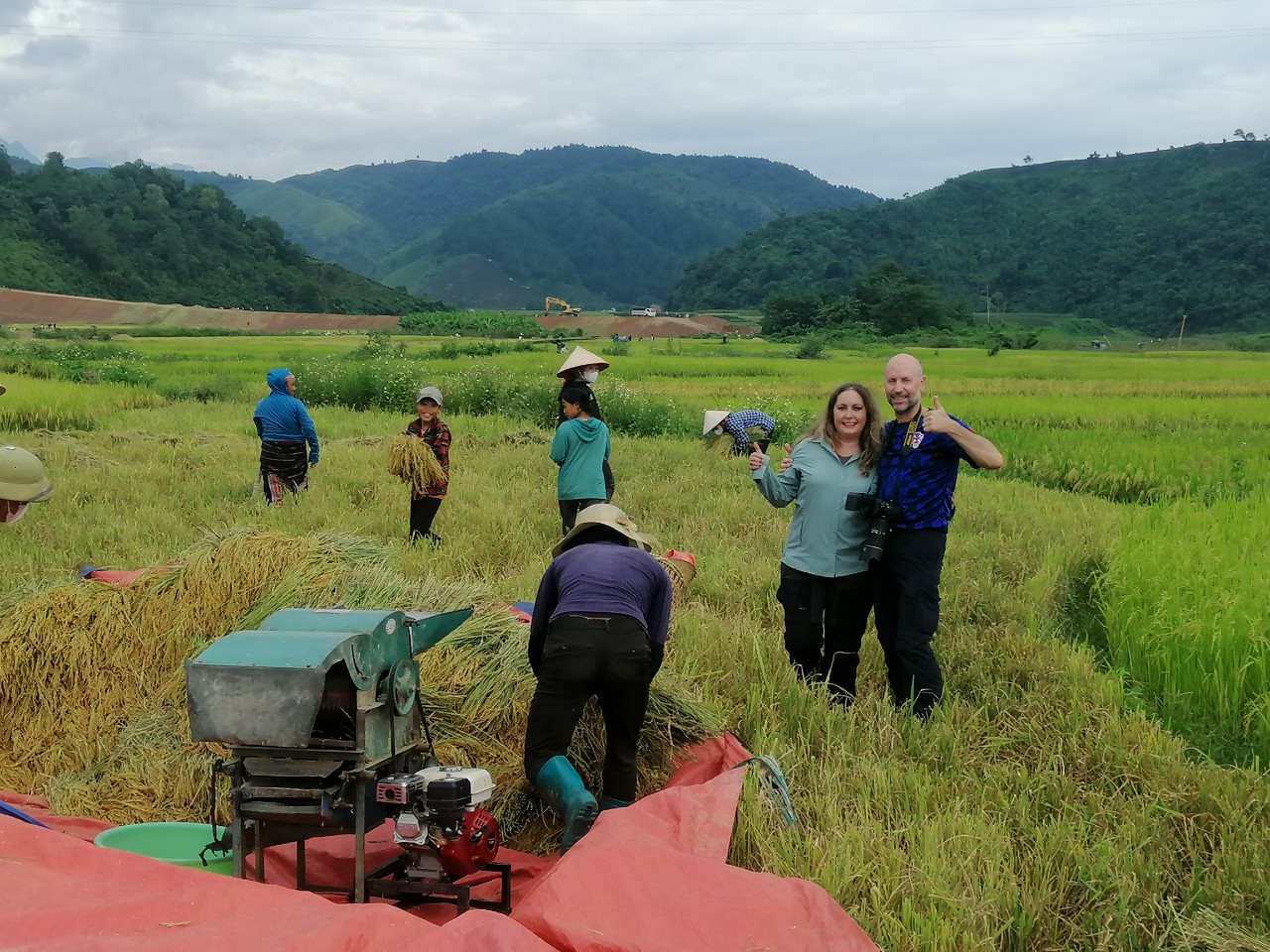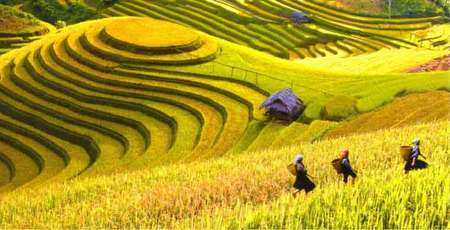
When to go to North Vietnam? Best period, climate, weather
- on Apr 28, 2024 By: Ngoc Nguyen
When planning a trip to Northern Vietnam, it is essential to consider the climatic conditions to ensure a pleasant and hassle-free experience. Indeed, this region offers a diversity of remarkable landscapes, ranging from the rice terraces of the mountainous regions to the spectacular rock formations of the coastal towns, passing through idyllic valleys. Therefore, to fully enjoy this destination and avoid the inconvenience linked to weather variations, it is essential to choose the best time to travel.
What is the best season to visit Northern Vietnam?
Spring (March-April)
Spring is the first choice. The season turns out to be one of the most pleasant to visit in Northern Vietnam. Temperatures begin to rise after the rigours of winter, hovering around 20 degrees on average, offering an ideal climate for exploring the sublime landscapes of the region. The rice fields take on their green adornment, offering a breathtaking spectacle, while the flowers burst forth, dotting the countryside with splashes of colour. In Sapa, the cherry blossoms tinge the hills with striking splendour, inviting contemplation.
>> Read more: Visit Sapa from A to Z

It is also the ideal time for walks in local villages, meeting locals and admiring the picturesque panoramas. Photographers find their inspiration in this spring setting, capturing the freshness of the climate and the green beauty of the landscapes, particularly in the mountainous regions of the North, popular for their evocative photos.
Spring also lends itself to mountain hikes. The trails are well maintained and the mild temperatures allow you to fully appreciate the natural splendor of the region. Trekking enthusiasts can explore the green valleys, rice terraces and traditional ethnic villages, thus enriching their travel experience.
>> Read more: The 10 essential applications during a trip to Vietnam
However, it should be noted that spring is also accompanied by occasional showers in Northern Vietnam. Although precipitation can be frequent, it is generally short-lived. Therefore, it is advisable to plan by taking a raincoat or an umbrella when travelling.

Summer (May-August)
Second place is summer. In Northern Vietnam, summer lasts from May to August, and is characterized by high temperatures and high humidity. Average temperatures can reach 35°C or more in some areas. This period also corresponds to the start of the rainy season, which brings regular showers.

Despite the high temperatures, summer also has some advantages. The rice terraces are at their peak, offering lush and beautiful landscapes. This is the perfect time to admire the beauty of the rice fields and discover local agricultural life.

Halong Bay, one of the main attractions in Northern Vietnam, can be visited during this time. However, it is important to note that summer is a peak national tourist season (particularly during the summer holidays from June to August), which means that the bay can be crowded. It is recommended to book your visit in advance to avoid crowds.
It's also important to prepare for downpours during the summer. Rainfall can be frequent and sometimes intense but is generally short-lived. It is advisable to carry a raincoat or umbrella when travelling.

Autumn (September-November)
Third, it is autumn which extends from September to November. It is considered the best time to visit Northern Vietnam. Temperatures are cooler and pleasant, with averages around 25°C. This is an ideal time to enjoy the natural beauty of Northern Vietnam.
Autumn is marked by the rice harvest in mountainous regions, which adds a touch of colour and beauty to the landscapes. The rice terraces are transformed into a patchwork of colours ranging from golden yellow to emerald green. It's a sight not to be missed, and Sapa is the perfect place to admire these magnificent landscapes.
This season is also good for outdoor activities such as hiking and cycling. Cooler temperatures make exploring the mountains and valleys more enjoyable. You can explore the local ethnic villages, meet the locals and learn about their culture and traditions.

Autumn is also a time when the weather is more stable, with less precipitation compared to summer. However, it is always advisable to prepare for occasional showers and bring a raincoat or umbrella.
Winter (December-February)
Finally, it's winter. This is a period when temperatures are cool, even cold, especially in mountainous regions. Average temperatures can drop below 10°C, or even close to 0°Cat night. Higher mountainous regions, like Sapa, can even experience occasional snowfall, which creates enchanting landscapes.
Despite the cooler temperatures, winter offers a unique ambience and many benefits for visitors. Christmas time is particularly popular for visiting Northern Vietnam, as the streets and markets are decorated with festive lights and traditional cultural activities.
Halong Bay can also be visited during winter, offering a mysterious atmosphere with fog shrouding the karst islands. It's a different experience than other seasons, but just as captivating.
>> Read more: Top 10 in Halong Bay: the must-sees and things to do
It is advisable to bring warm clothing and extra layers to cope with colder temperatures. Mountainous regions can be particularly cold, so it is important to prepare accordingly.
The best months to visit Northern Vietnam
For an optimal travel experience in Northern Vietnam, it is essential to choose the best months based on climatic conditions. Based on the data provided:

- November: offers pleasant temperatures around 26°C, with a duration of sunshine of 5 hours per day and only 5 days of rain. It is an ideal month to enjoy the landscapes without being bothered by precipitation.
- December: although temperatures drop slightly to around 22°C, conditions remain favourable with 4 hours of sunshine per day and only 3 days of rain. It's the perfect time to discover the region in a fresher atmosphere.
- January: Maintains mild temperatures of around 20°C, although the number of hours of sunshine decreases to 3 hours per day. However, with only 5 days of rain, this month still offers great opportunities for visits.
- February: temperatures rise slightly to around 21°C, but the duration of sunshine decreases to only 2 hours per day. It is also the rainiest month with 7 days of precipitation, which can affect outdoor activities.
- March: experiences a slight increase in temperatures to around 23°C, but the number of rainy days increases significantly to 11. Despite this, with good planning, it is still possible to enjoy the region's stunning scenery.
- In April, temperatures reach around 27°C, offering warm and sunny days. Although the number of rainy days is still relatively high at 9, this month marks the start of the dry season in the region, making it an attractive time for travellers.
Discovering the emblematic destinations of Northern Vietnam
Northern Vietnam is full of natural and cultural treasures that attract travellers from all over the world. From the majestic mountains of Sapa to the rice terraces of Mu Cang Chai to the historic cities of Hanoi, each region offers a unique experience. However, to fully enjoy these wonders, it is essential to choose the best time to travel, taking into account climatic variations that may have an impact on your stay.
Sapa: Nestled in the Northwest mountains, Sapa is renowned for its spectacular landscapes, colourful markets and quaint ethnic villages. Spring and autumn are the best seasons to visit Sapa. In spring, mild temperatures and lush green landscapes provide ideal conditions for hiking and exploring. In autumn, the rice terraces reach their full bloom, creating a breathtaking array of vibrant colours.
Hanoi: Vietnam's vibrant capital, Hanoi, is a city steeped in history, with its ancient temples, narrow streets and bustling markets. Spring and autumn are also the best seasons to visit Hanoi. In spring, the city comes alive with Lunar New Year festivities and flowers in full bloom. In autumn, the weather is milder and traditional festivals like the Mid-Autumn Festival add a touch of color to the city.
>> Read more: 8 Must-Visit Traditional Craft Villages in Hanoi
Mu Cang Chai: Known for its cascading rice terraces, Mu Cang Chai is a popular destination for photography enthusiasts and nature lovers. The best time to visit Mu Cang Chai is during the harvest season, which usually occurs in September and October. The rice fields then take on golden hues and offer a breathtaking spectacle.
Halong Bay: Listed as a UNESCO World Heritage Site, Halong Bay is famous for its spectacular karst formations and crystal clear waters. The best time to visit Halong Bay is from October to April when the weather is dry and sunny. Boat cruises offer stunning views of the limestone islands and allow travellers to experience the natural beauty of the area.
>> Read more: Top 10+ boats and junks for cruising in Halong Bay (Updated 2024)
Ninh Binh: Known as “Halong Bay on land”, Ninh Binh is famous for its stunning karst landscapes, winding rivers and mysterious caves. Visitors can explore the area by sailing the Ngo Dong River through the impressive limestone formations of Tam Coc and Trang An or by climbing the steps to the top of Mua Mountain to enjoy panoramic views of the surrounding countryside. Ninh Binh is also an important pilgrimage site with ancient temples like Bai Dinh Temple, the largest Buddhist temple complex in Vietnam.
Mai Chau: Nestled in the heart of the Hoa Binh mountains, Mai Chau is a haven of peace surrounded by green rice terraces and traditional ethnic minority villages. Travelers can immerse themselves in local culture by staying in stilt houses, taking traditional cooking classes, or attending folk dance and music performances. Cycling or walking tours through the green valleys offer a unique perspective on the daily lives of locals and allow you to discover the unspoilt natural beauty of the region.
>> Read more: Discovering the natural beauty of Mai Chau by bike
Pu Luong: Less known than its more famous neighbours, Pu Luong is a hidden gem offering spectacular scenery of rice terraces, lush rainforests and refreshing waterfalls. Adventure-seeking travellers can hike through Pu Luong Nature Park, discover remote villages and meet local communities who have lived in harmony with nature for generations. Eco-friendly accommodations offer an authentic stay experience, where visitors can relax and recharge in a peaceful and unspoiled setting.
>> Read more: Combined Mai Chau – Pu Luong circuit: What to see and what to do?
Ha Giang: Ha Giang, located in the far north of Vietnam, is a fascinating destination for travellers seeking adventure, breathtaking landscapes and authentic cultural experiences. This mountainous province, bordering China, is renowned for its winding roads winding through deep valleys, its vertiginous rice terraces and its ethnic minority villages preserving ancestral traditions. In addition to its spectacular landscapes, Ha Giang also has a fascinating cultural and historical wealth. Travelers can visit bustling local markets, explore ancient temples and pagodas, and learn about the region's turbulent history, marked by ethnic conflicts and Chinese influences. Adventure seekers will find what they are looking for in Ha Giang, with a multitude of outdoor activities to enjoy. Hiking, trekking, climbing, rafting and camping are just some of the opportunities offered in this unspoilt mountain region.
Related articles:
>> Best things to do in Vietnam
>> Tour 3 weeks in Vietnam, an exciting tour of the Dragon
>> Vietnam tour 15 days: What to do? What itinerary ideas do you have?
>> Tour 1 week in Vietnam: Good deals for a 7-day tour in Vietnam
>> Tour in Vietnam in one month: 3 options to absolutely enjoy!
Comment
Other Blog
Categories
Latest News
on 31 Dec, 2025
on 31 Dec, 2025
 Español
Español Français
Français






















Morgane Ter Cock
on Dec 18, 2025HerbertPhomaMS
on Oct 19, 2025Lilyan Cuttler
on Oct 15, 2025Avenue17XC
on Sep 14, 2025Avenue18JL
on Jul 21, 2025